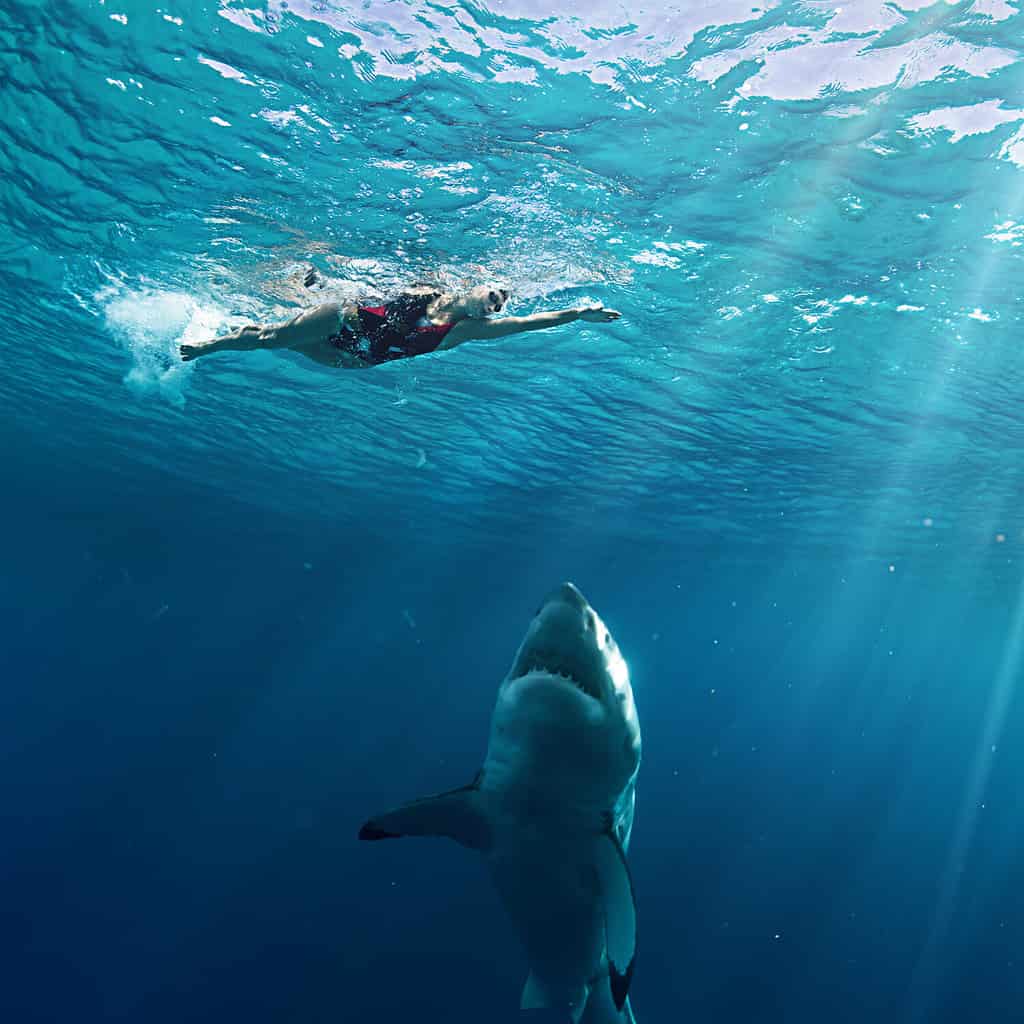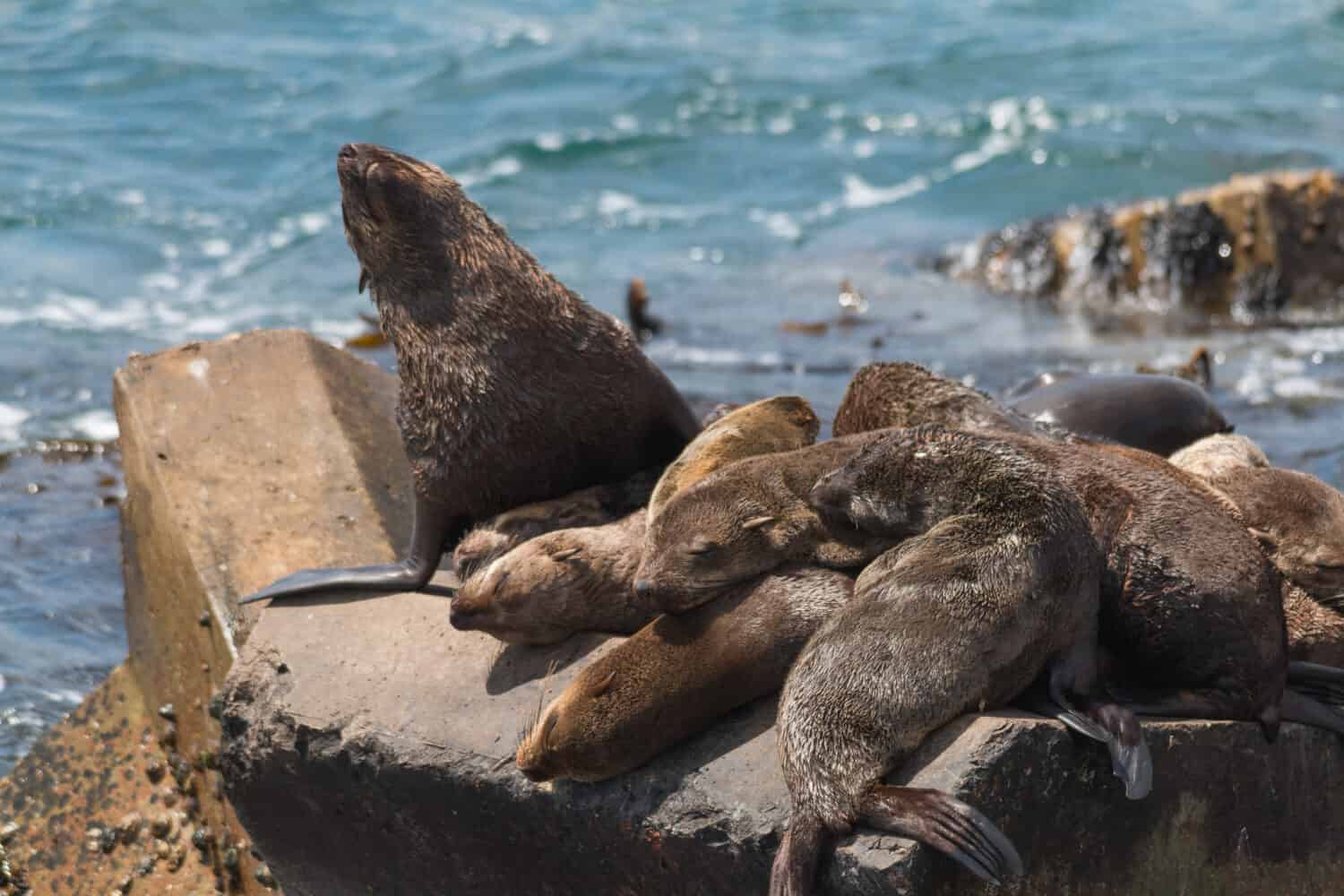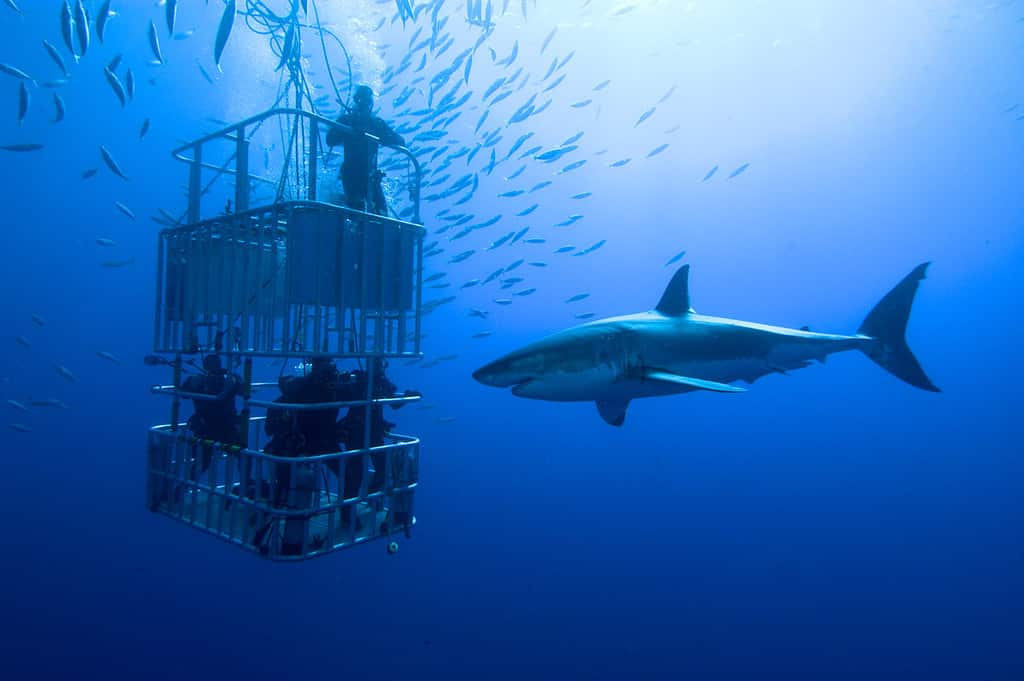Three Killer Facts About Great White Sharks and Their Seal Prey
- Seals are a primary part of great white sharks’ diet, providing crucial nutrition. Great white sharks often frequent areas where seal colonies congregate, like coastal regions and rocky shorelines, to enhance hunting success.
- Shark attacks on humans can happen due to mistaken identity. From below the water’s surface, a person lying on a surfboard might resemble a seal, leading the shark to perceive them as prey. Such incidents stem from misidentification since humans aren’t natural prey for sharks.
- Great white sharks possess specialized senses, especially electroreception, to detect weak electrical signals from prey’s muscle contractions. This unique sense aids in locating seals, even in dark or murky waters.
Bewildered Boaters Nervously Watch a Great White Shark Chomp at a Seal Pup!
In the breathtaking video below, passengers aboard a boat were treated to a heartwarming sight. They sailed through crystal clear waters. Their eyes widened with delight as they spotted a small, adorable seal pup gracefully floating on the surface. “Look how cute it is!” they exclaimed; their excitement palpable.
However, their joy quickly turned to concern as an immense shadow emerged from the depths of the ocean. A massive great white shark made a dramatic entrance, commanding the frame with its formidable presence. The cape fur seal pup sensed the danger and swiftly sprang into action, attempting to outmaneuver its colossal predator. The chase began as the shark deployed its powerful tail, showcasing its surprising agility for its size.
The seal pup, though smaller, displayed its unparalleled maneuverability, managing to turn at tighter angles and evading the shark’s relentless advances. The tension in the air escalated as the great white shark persisted, turning on a dime in its relentless pursuit. The waters churned with intensity, and for a moment, it seemed as though the odds were stacked against the young seal pup.

Great white shark attacks often occur when a shark misidentifies a swimmer or surfer as a seal.
©Willyam Bradberry/Shutterstock.com
As the waters eventually calmed, an air of inevitability settled among the spectators. The great white shark had succeeded in its pursuit, leaving the fate of the charming seal pup sealed in a battle that was never meant to be fair. The remarkable encounter left the passengers in awe, witnessing the raw power and agility of these oceanic titans. It was an unforgettable display of a great white shark’s predatory prowess.
Do Seal Pups Tend to Be in the Ocean Unprotected?
Seal pups are generally born in the ocean but not left unprotected against potential predators, like the great white shark in the video below. After birth, mother seals play a vital role in safeguarding their vulnerable offspring. They usually keep the seal pups in secluded areas such as rocky shores or ice floes, providing a safe haven away from the open waters.

Cape fur seals cuddling while laying on a concrete structure to absorb sunlight. While on land, the members of this cute colony can usually consider themselves safe.
©Moehring/Shutterstock.com
During their growth period, which can vary among different seal species, seal pups are under the watchful eyes of their mothers. Cape fur seals, like the one in the video below, grow up under their mother’s care, crucial for early development. These pups born on shores or rocks are nursed and protected by mothers for weeks. During this time, they learn swimming, and hunting, then venture into open waters. Some seal pups take up to six weeks to wean and gain enough strength before venturing into the ocean on their own.
As they mature, seal pups undergo an essential period of development. This transition typically occurs when they are around three to four months old. During this time, they gradually learn critical hunting skills, including swimming techniques, diving proficiency, and honing their senses to locate prey.
By the time seal pups reach the stage of confidently hunting for themselves, they have grown significantly in size and strength. They become less susceptible to predation by large marine predators such as the great white shark. The protection and guidance provided by their mothers during their formative stages play a crucial role. It ensures the survival of these young seal pups in the dynamic and often perilous ocean environment.
How Do Great White Sharks Catch Their Prey?

A huge great white shark menacingly lurks outside of a shark cage with eyes locked on the divers inside.
©Stefan Pircher/Shutterstock.com
Great white sharks are skilled hunters known for their remarkable predatory tactics. They can be found in various locations while hunting for seals. These apex predators are often spotted in areas close to seal colonies, such as coastal regions or near rocky shores. Seals gather there for rest or during their birthing season. Additionally, great white sharks may also venture into open ocean waters. They follow the migratory patterns of seal populations.
As seen in the captivating video below, the shark can swiftly turn and propel itself through the water. It moves with incredible speed and agility. The video below features a great white shark chasing a seal pup in the crystal clear waters. It exemplifies the awe-inspiring display of the shark’s predatory prowess.
Their remarkable adaptation and mastery of the art of hunting make them one of the ocean’s most formidable predators. They ensure their success in capturing seals, which is a crucial part of their diet.
The photo featured at the top of this post is © Martin Prochazkacz/Shutterstock.com
Thank you for reading! Have some feedback for us? Contact the AZ Animals editorial team.






